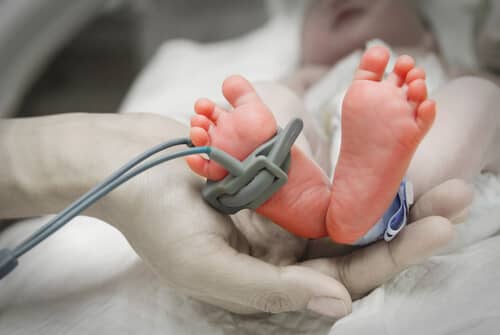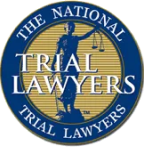
Statute of Limitations on Cerebral Palsy Cases in Illinois
Cerebral palsy is an incurable, lifelong condition. It can result from medical errors that occur during or shortly after a child’s birth. Depending on the severity of the injury, a person with cerebral palsy may require extensive medical care, therapy, special education and personal assistance from childhood through adolescence and adulthood.
If the negligence of a doctor, nurse, hospital or other medical care provider caused your child to develop cerebral palsy, you have the right to pursue a medical malpractice claim. You may be eligible to recover compensation that covers past and future medical bills and other losses.
However, you must pay close attention to the deadlines imposed by the statute of limitations on medical malpractice cases in Illinois. If you miss a deadline, you could lose your right to file a lawsuit.
The birth injury lawyers of Salvi, Schostok & Pritchard P.C. can help you. We have protected the rights of cerebral palsy victims and their families in Chicago and throughout Illinois since 1982. In more than 350 cases, we have obtained verdicts or settlements of $1 million or more on behalf of our clients. We can offer the skill, experience and compassion you need. Contact us today and allow us to review your case in a free consultation.
Statute of Limitations on Cerebral Palsy Cases
The statute of limitations on cerebral palsy cases can range between 2-22 years. For most medical malpractice claims, the statute of limitations is 2 years. If a child is involved, med mal claims can be brought within 8 years of the error. For disabilities, the statute of limitations does not begin until the disability has been removed.
A statute of limitations establishes the deadline for filing a lawsuit. If you file a lawsuit after the deadline passes, a court can dismiss your claim. In Illinois, as in most states, the statute of limitations depends on the type of claim.
Under Illinois law, the statute of limitations for medical malpractice cases is two years from the date when the patient actually knew or reasonably should have known that the patient suffered injury due to the negligence of a medical care provider. In no event can a patient file a medical malpractice lawsuit more than four years after the date of the negligent act or omission – regardless of when the patient discovered the injury.
Exceptions apply to these rules. Those exceptions are:
- Medical errors involving children – Patients who are under age 18 at the time of the medical malpractice have until eight years after the date of the negligent act or omission. However, the patient must bring the lawsuit before the patient turns age 22.
- Medical errors causing disability – If the patient suffers from a disability that makes the patient physically incapable of filing a medical malpractice claim, the statute of limitations does not run as long as the disability exists. Once the patient can physically proceed with a lawsuit, the patient has two years to file a claim.
- Fraud – If the medical care provider purposely withholds information to conceal the medical malpractice, the statute of limitations extends to five years from the date that the patient discovers the cause of his or her injury.
In most cases, a cerebral palsy patient’s disability does not end. So, the clock may never run out on a medical malpractice claim against a health care provider who caused a child to develop the disorder. However, in some cases, therapy can help a cerebral palsy patient to lessen or overcome the disabling effects of the disorder. The defendants in a medical malpractice lawsuit could use this fact to contend that the statute of limitations bars a patient’s medical malpractice claim.
The bottom line: If a doctor has diagnosed your child with cerebral palsy that may be the result of medical malpractice, you should speak with an experienced medical malpractice lawyer from Salvi, Schostok & Pritchard P.C., about your potential legal claim as soon as possible. You do not want to lose your right to pursue full and fair compensation.
What Does a Cerebral Palsy Diagnosis Mean?
In order to take timely legal action, you should understand common causes of cerebral palsy. The neurological disorder can arise from a child’s brain or central nervous system suffering injury due to trauma or complications while the child is in utero or during labor or delivery.
Depending on the type and severity of the condition, cerebral palsy may adversely affect a child’s movement, muscle coordination, posture, senses and ability to think and learn. Some children with cerebral palsy require surgery. Many children benefit from therapy and assistive devices. However, the disease cannot be cured.
The most common causes of cerebral palsy are:
- Deprivation of oxygen to the brain
- Head trauma before, during or shortly after birth
Different types of cerebral palsy are:
- Spastic cerebral palsy – This form of cerebral palsy involves muscle performance issues. Patients may experience erratic, jerky movements. They may also lack the ability to relax their muscles.
- Athetoid cerebral palsy – Doctors also use “dyskinetic cerebral palsy” to describe this form of the disorder. It involves damage to area of the brain that controls coordination, reflexes and involuntary movement. A patient’s muscles may fluctuate between being too tense or too loose. A patient may find it difficult to walk or grasp objects.
- Ataxic cerebral palsy – This type of cerebral palsy occurs due to damage to the cerebellum, which controls balance and coordination. It can cause a reduction in a patient’s muscle tone and lead to shakiness, tremors and speech problems.
- Mixed cerebral palsy – A child with mixed cerebral palsy suffers from severe impairment. It is as if the child suffered multiple brain injuries.
What Are Symptoms of Cerebral Palsy?
The symptoms of cerebral palsy depend on which area or areas of the brain are affected. They may become apparent once a child reaches six months of age and begins moving or attempting to communicate. These symptoms include
- Delays in reaching normal developmental milestones such as rolling over, sitting up, crawling or walking
- Muscle tone problems (too tight or too loose)
- Tight joints or joints with limited range of motion
- Involuntary movements such as spasms and tremors
- Slow or labored body movements
- Balance problems
- Difficulty coordinating voluntary movements (poor eye-hand coordination)
- Difficulty with fine motor skills such as problems picking up or holding objects
- Problems with walking or an abnormal gait such as scissor or toe walking
- Slow or impaired reflexes
- Inability to stand upright or other posture problems
- Speech difficulties
- Swallowing difficulties
- Excessive drooling
- Difficulty consuming food
- Vision and hearing problems
- Ongoing pain
- Cognitive impairments
- Learning disabilities
- Seizures
- Inability to control the bladder or bowels.
Parents whose children experienced problems during labor and delivery should be especially alert to possible cerebral palsy symptoms. They should consult with a medical expert as well as an experienced medical malpractice lawyer if they suspect that a healthcare provider’s negligence may have caused their child to suffer harm.
What Damages Can You Pursue in a Cerebral Palsy Claim?
A child with cerebral palsy may require the lifelong use of adaptive medical devices, therapy and other care. The child may also need special education. The child’s opportunities for higher education and employment may be limited. A young adult with cerebral palsy will have fewer opportunities to marry and have family of his or her own as well.
An Illinois birth injury lawsuit can assert claims on behalf of both the child and parents. If the child is still a minor, a personal representative of the child will bring a claim on the child’s behalf. The claim may seek damages that include:
- Economic damages – Past and future medical expenses, lost services and earnings and caretaking costs
- Non-economic damages – Disability or loss of normal life, physical and mental pain and suffering, increased risk of future harm and shortened life expectancy.
Who Can Be Held Liable for Cerebral Palsy?
Any medical professional who fails to live up to the obligation to provide reasonable care to his or her patients can be held legally responsible if the failure directly causes a patient to suffer brain damage and cerebral palsy.
In birth injury claims, liable parties may include:
- Obstetricians and gynecologists (OB-GYNs)
- Surgeons
- Nurses
- Midwives
- Hospitals
In some cases, hospitals or clinics may be held liable not only for their own mistakes but also for the errors of their employees. For example, if a hospital employs a careless doctor, that doctor’s negligence will be treated as the hospital’s negligence.
Get Help from an Experienced Chicago Cerebral Palsy Lawyer
If your child has been diagnosed with cerebral palsy, do not put off discussing your case with an experienced attorney from Salvi, Schostok & Pritchard P.C. If our investigation shows that your child’s birth injury resulted from a medical care provider’s negligence, you may be able to obtain compensation for your medical expenses and other losses, including your child’s loss of enjoyment of life.
Our law firm has extensive experience with cerebral palsy birth injury claims in Chicago and throughout Illinois. Contact us today for a free initial consultation.







